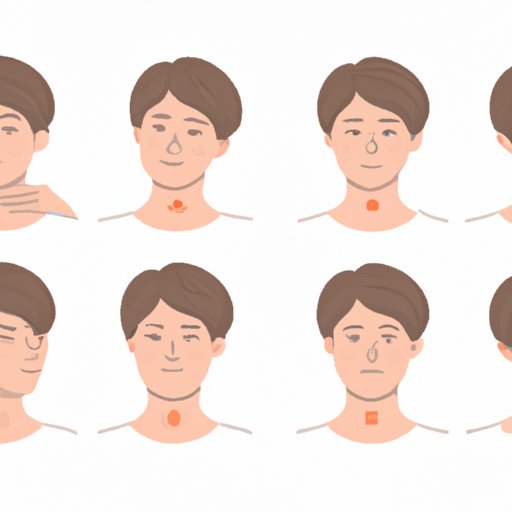
I. Introduction
A hickey, also known as a love bite, is a discoloration on the skin caused by suction or aggressive kissing. While some people wear their hickeys as a badge of honor, others may feel self-conscious about them. If you find yourself in the latter category, you’re in luck: there are several methods for removing a hickey quickly and effectively. In this article, we’ll cover everything from preventive measures to natural remedies to concealment techniques.
II. Prevention is Key
Perhaps the best way to remove a hickey is to never get one in the first place. Communication with your partner is key; if you’d rather avoid hickeys altogether, let them know before things get too heated. If you are open to hickeys but don’t want them to be too noticeable, suggest a more gentle form of kissing.
If you do end up with a hickey, try to avoid aggravating it further. Avoid scratching or rubbing it, as this will only add to the swelling. Additionally, try not to wear tight clothing that may irritate the area.
III. Immediate Treatment
It’s important to act quickly to reduce the swelling and discoloration caused by a hickey. One quick and easy method is to use a cold compress. Simply wrap a few ice cubes in a cloth and apply to the affected area for 15-20 minutes at a time. If you don’t have ice cubes handy, a bag of frozen vegetables will do the trick.
If the hickey is particularly stubborn, you may want to try a warm compress instead. Soak a cloth in warm water and apply to the area for 10-15 minutes at a time. Alternatively, you can alternate between hot and cold compresses for best results.
IV. Topical Treatments
In addition to cold and warm compresses, there are several topical treatments available to help remove a hickey. Aloe vera is a popular choice as it is known for its soothing properties. Arnica gel is another option that is believed to help with bruising. Vitamin K cream is also said to be effective in reducing discoloration.
When choosing a topical treatment, it’s important to consider the severity of the hickey. For mild hickeys, a simple aloe vera gel or arnica gel may do the trick. For more severe cases, vitamin K cream may be necessary. Apply the treatment of your choice several times per day until the hickey fades.
V. Natural Remedies
If you prefer a more natural approach to hickey removal, there are several remedies to try. Witch hazel is a popular choice as it is believed to have anti-inflammatory properties. Peppermint oil is another option that may help reduce swelling. And if you happen to have a banana peel on hand, rubbing it on the affected area may help promote healing.
When using natural remedies, it’s important to follow the instructions carefully. For example, peppermint oil may need to be diluted before use, and banana peel should be applied flesh-side down.
VI. Concealing the Hickey
If all else fails, there are ways to conceal a hickey until it fades. Makeup is an obvious choice; use a green color-correcting concealer to neutralize the redness, followed by a flesh-toned concealer to blend it in. Scarves and clothing with high necklines can also help hide a hickey. And if you’re feeling trendy, try a statement scarf tied in a stylish knot to draw attention away from the affected area.
VII. When to See a Doctor
In most cases, hickeys are harmless and will fade on their own. However, there are instances where medical attention may be required. If the hickey is unusually large or painful, or if it lasts longer than two weeks, you should see a doctor. They may recommend a prescription-strength cream or advise you on other treatment options.
VIII. Conclusion
Removing a hickey may seem like a daunting task, but with the right methods, it can be done quickly and effectively. Remember to communicate with your partner to prevent future hickeys, and prioritize consent in all intimate encounters. Try different methods until you find one that works for you. With a little patience and some careful treatment, your hickey will be a thing of the past in no time.





